2016
Looking Back
As another year comes to a close we look back on 2016 at the CREC with a photo review.

Early spring weather allowed for adequate field preparations and timely planting. Yield potential was looking very good for crops at the CREC.
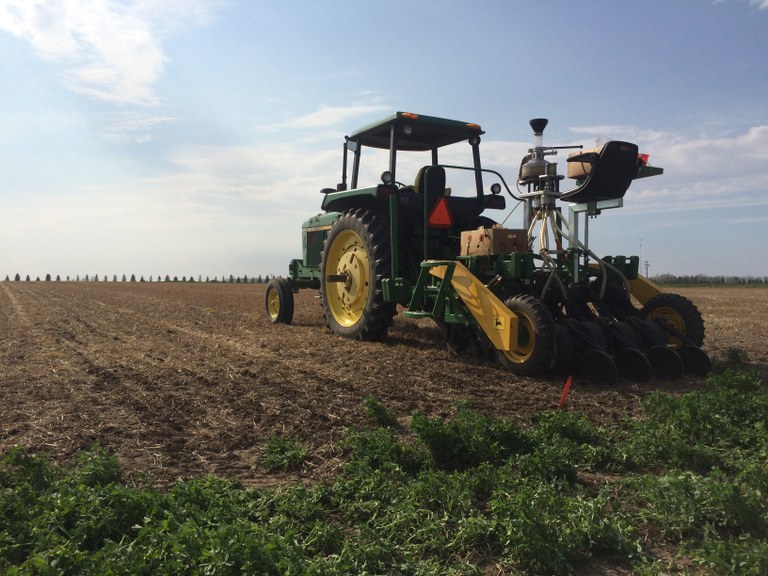
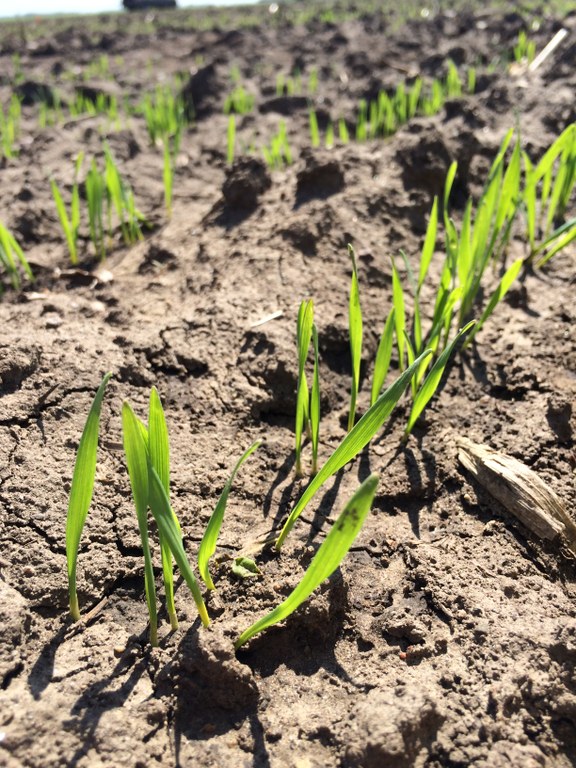
Canola shown in the picture below may have survived freezing temperatures in mid-May, but the Flea Beetles made their presence known just the same. Severity of damage done by beetles (and even frost) ranged in field plots and some were replanted. This provides proof that IPM scouting is important and spraying insecticides in a timely manner is just as important no matter the conditions.
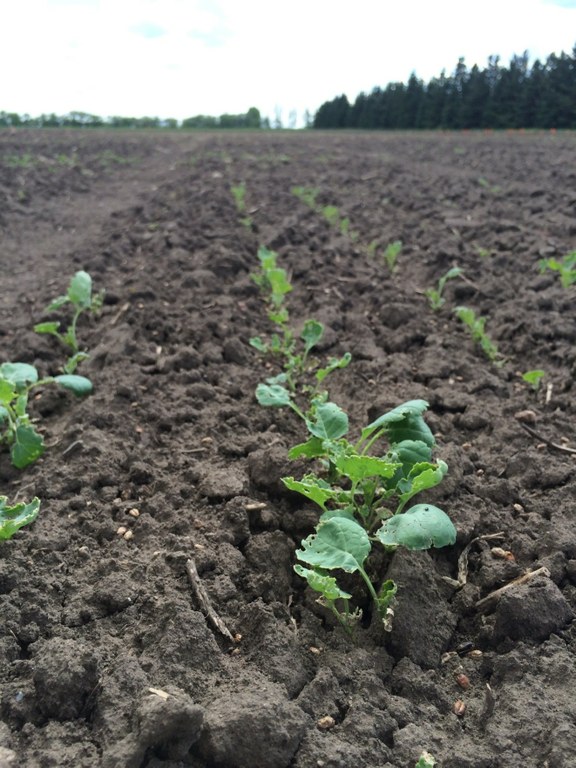
The CREC and surrounding area received a devastating hail storm that destroyed a lot of plans for several of our researchers. The July 9th hail storm hit soybean plots as seen below in the R2 stage.
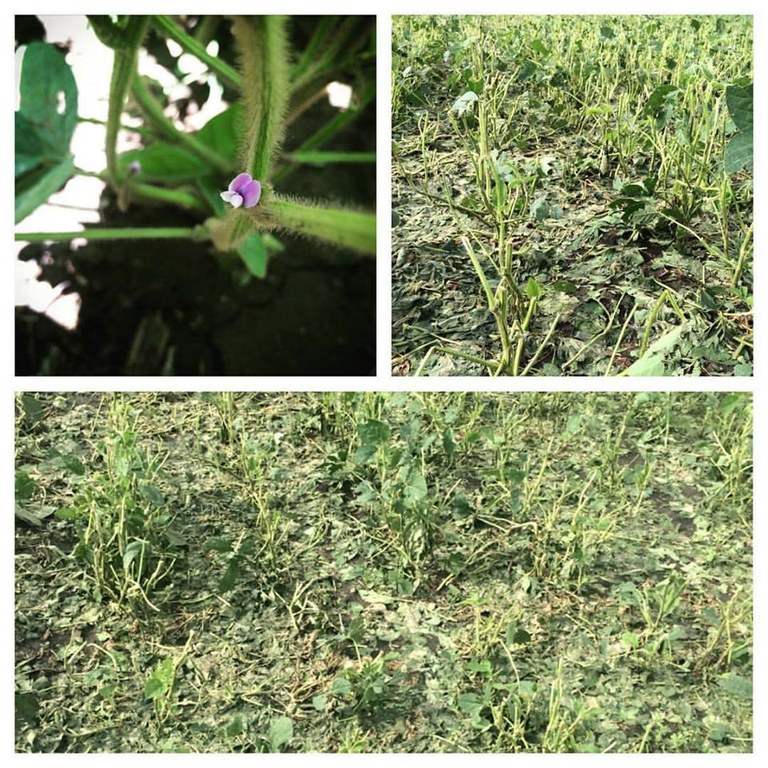
Beautiful weather made for an enjoyable Field Day and Row Crop Tour! Various agronomic production, pathology, soils, nutrient management, fruit and livestock topics were discussed.
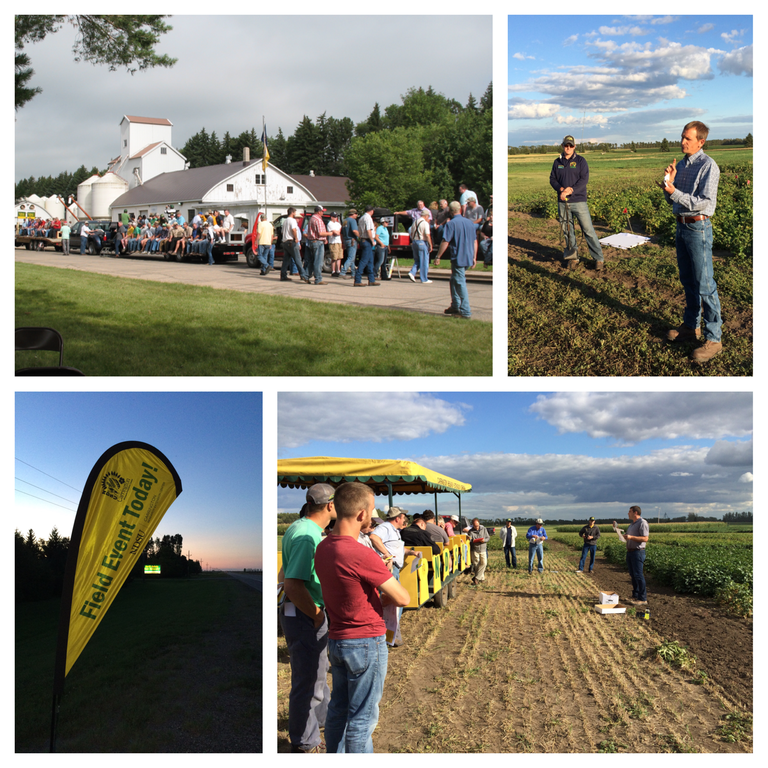
The mild fall weather lasted longer than anticipated in ND and it was greatly appreciated by researchers and technicians as they were able to harvest and collect samples without being in the cold and snow.
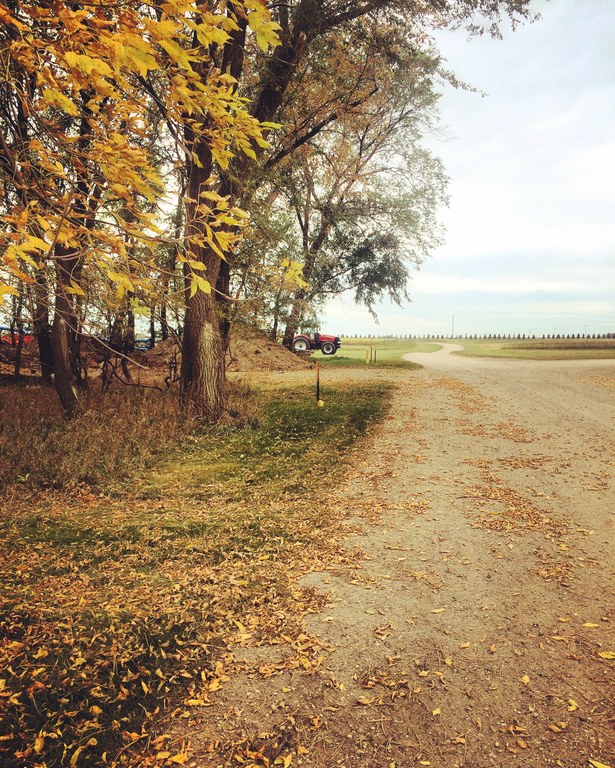
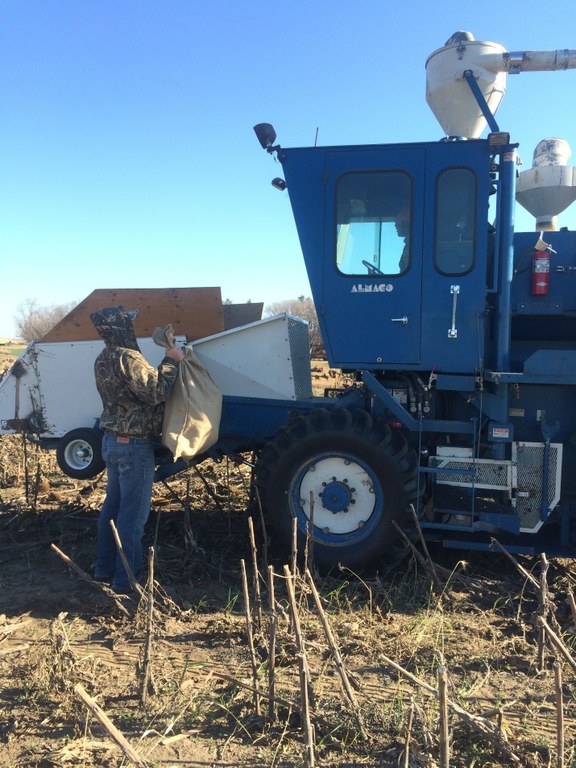
The Plant Pathology program team prepared for new 2017 season experiments by laying down straw for an experiment focusing on the effects of biomass with relationships to root rot. Stay tuned for data and observations during the next season!
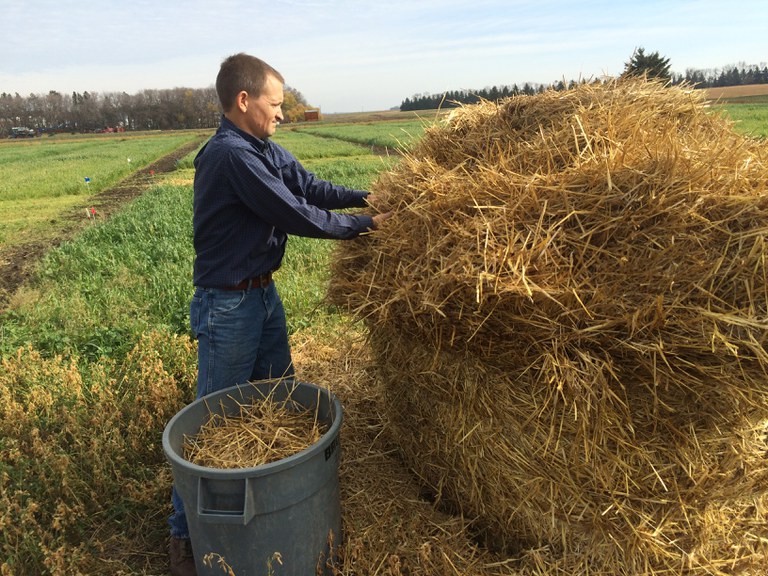
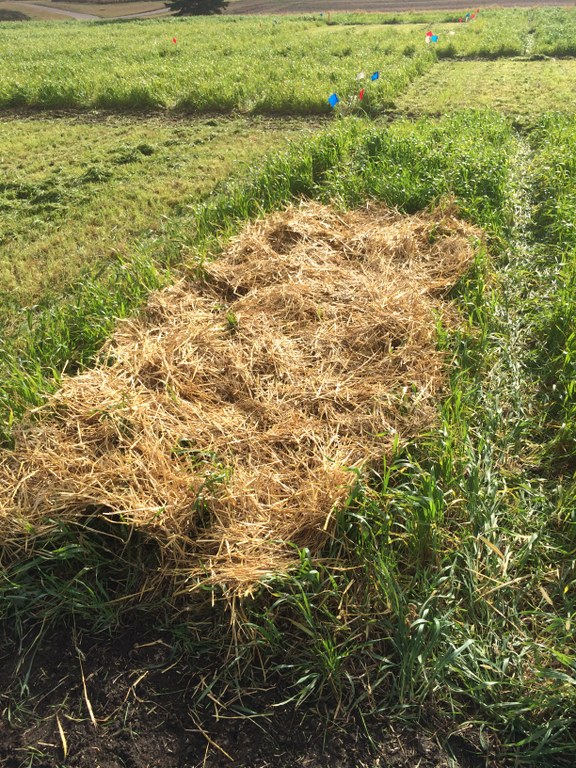
Lab work picks up full speed in the late fall and into the winter months. Agronomy and Pathology researchers are busy processing samples and collecting various types of data from yield and test weights to visual quality and seed size. Each program at the CREC works hard to process the data and make sure year-end reports are submitted on a timely basis.
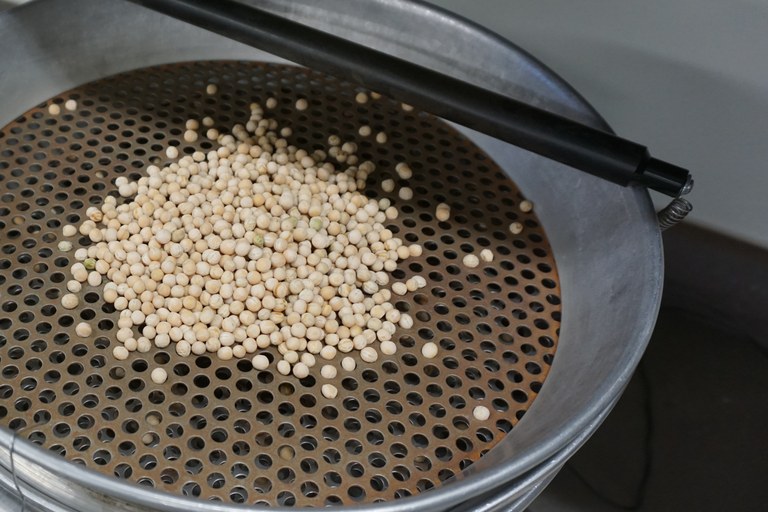
The pathology program team is also busy with ascospore production, growing inoculum, and culturing various isolates of pathogens for field use.
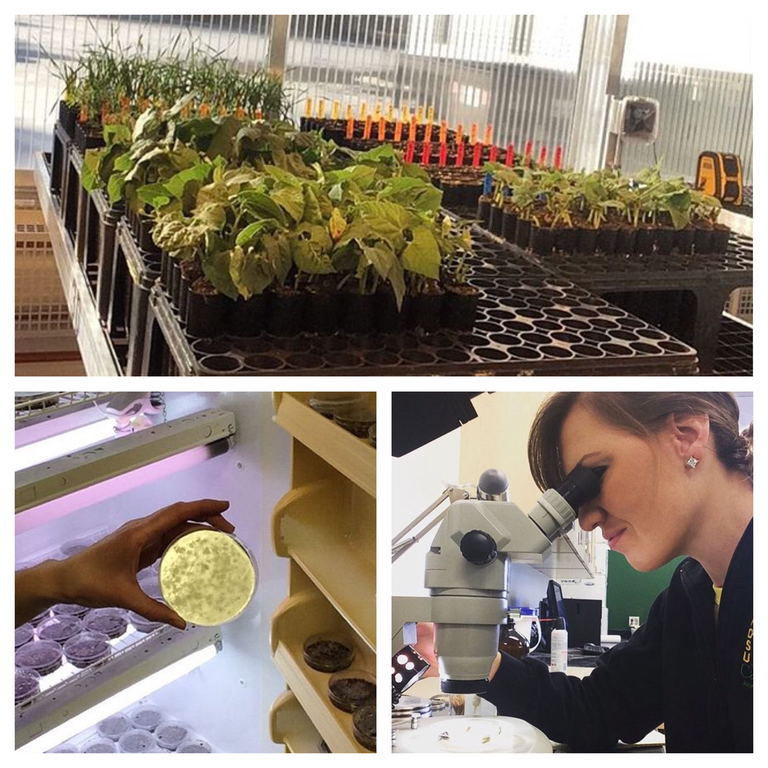
December came in with a different plan. Snow fell from late afternoon on Monday, December 5th to early Thursday morning, December 8th. The CREC received around 18”. The station hasn’t experienced that much snowfall in quite some time. A good reminder to us all that Mother Nature still has a sense of humor in ND and we need to be prepared at all times!

The CREC Livestock Unit has spent countless hours on snow removal to be able to get feed to the cattle.
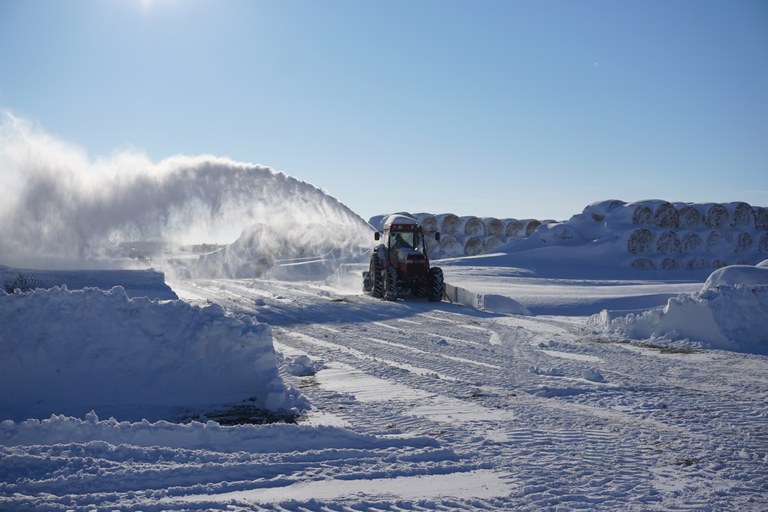
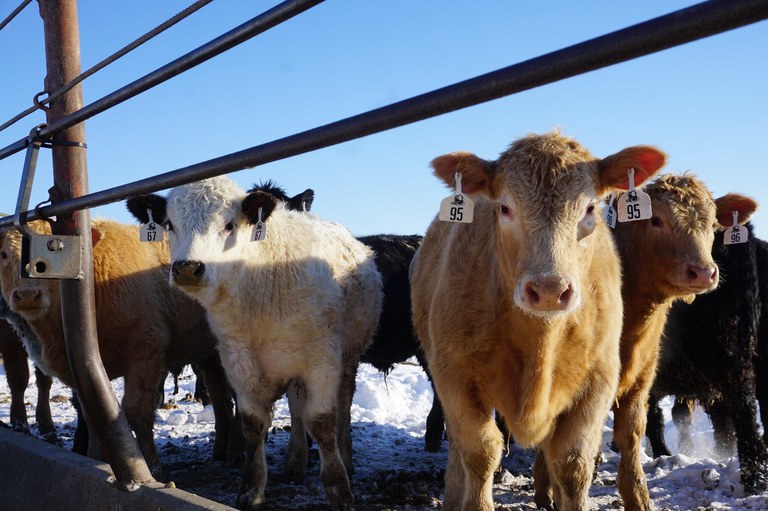
Sundogs in the sky show for colder weather ahead!
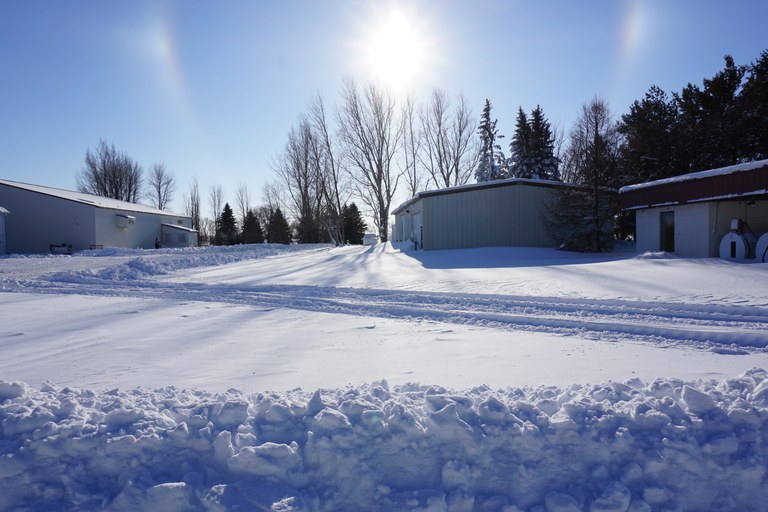
We love what we do and want to continue sharing it with you! We look forward to seeing and hearing from you during the 2017 growing season! #plant17
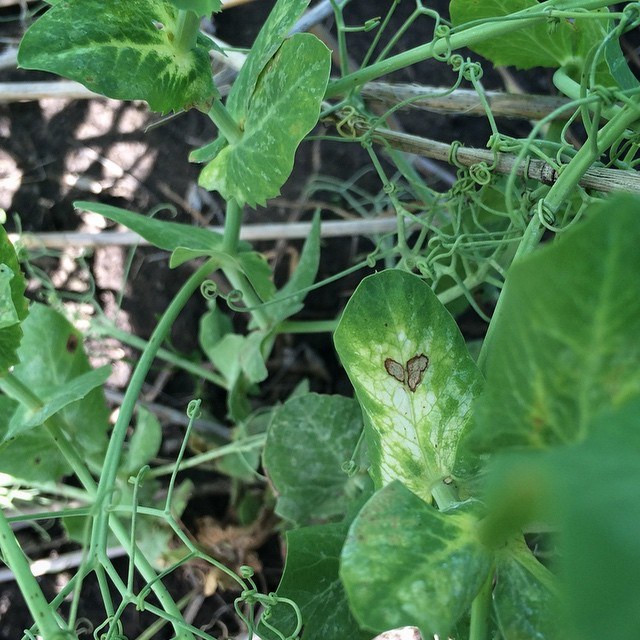
All photos by Suanne Kallis, plant pathology research specialist.
Next Chapter
The Carrington Research Extension Center will say goodbye to two long-time employees at the end of 2016. We wish all the best to Dale Burr and Betty Montgomery as they begin retirement.
At the end of 2016, Dale will have been employed by NDSU for exactly 42 years. His first week plunged him into blizzard conditions, and his last month seems to be about the same. Fortunately for all of us, most of his working days were far more pleasant.
Betty has been a familiar face at the CREC as long as the main office building has been here! She began employment with NDSU when Extension staff moved on site from their prior offices at the Garrison Diversion building, in November of 1986. She took about a year off, in late 1999-2000, but has been a regular in our administrative office since then.
While Betty moved right into a new office, that process took much longer for Dale – a new office building at the Livestock Unit was constructed about one year ago. Prior to that addition, the Livestock Technicians shared a small corner of a shed as an office. It was cold in the winter and hot in the summer, the curved roof was one of the walls AND the ceiling, but at least Dale could go home at night during calving season instead of bunking on a cot.
Betty has worked with almost every kind of office equipment and media imaginable – film negatives, slide photographs, Polaroid cameras, overhead projection sleeves, mimeograph copies, computers with handset modems, 5-1/4” floppy disks and 3.5” disks. Now, wireless internet, a webcam and a headset connect LED flat screen computers to a network, a full-color printer, cloud storage and the world.
It took a while for even one computer to be installed at the livestock unit, but now every desk is fully equipped. Innovation in the yard has taken a different twist, with a major upgrade in the form of a new feed mill in 2002. The old feed mill was significantly smaller and could only mix two products at a time, while the current mill can handle four products, with supplements still added by hand. Cattle are, basically, cattle: they must be fed, every day; they give birth at all times of the day (and night); there is a lot of fencing, and equipment and our livestock crew work in all kinds of weather.
One thing is common to our newest retirees: they both agree that it’s probably a good thing that their retirement starts in the winter, when it’s easier to take a few days off and not worry about going out in the cold.
We will miss Dale and Betty, and congratulate them both on jobs well done.

Central Dakota Ag Day December 16
Everyone is invited to the 2016 Central Dakota Ag Day at the CREC on Friday, December 16. The program will begin with coffee and doughnuts at 9 a.m. Introductions are at 9:45 and workshop sessions start at 10.
"Central Dakota Ag Day is for everyone," says Joel Lemer, the agriculture and natural resources Extension agent for Foster County. This daylong program will provide educational information on a variety of topics - some old, some new - for crop and livestock producers across the state of North Dakota. The program also includes horticultural offerings for the nontraditional production agriculturalist. Most of the sessions are concurrent, with four topics available during each time period. There will also be a commercial area with booths from ag suppliers and commodity groups.
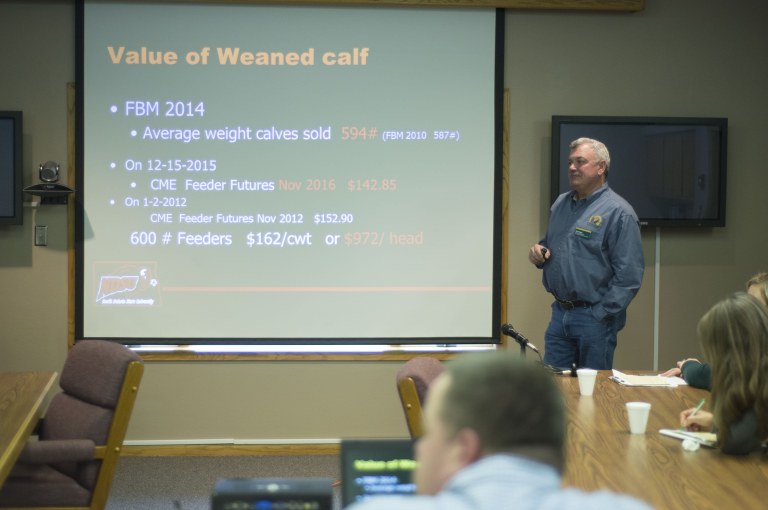
Karl Hoppe, CREC, discussing the value of weaned calves at a past Central Dakota Ag Day.
Workshop topics include:
- Developing a weed management strategy
- Best management practices of new soybean weed management traits
- North Dakota Agricultural Weather Network update
- Cover crops: soybeans and dry beans on winter rye
- CREC soybean production research review
- Soybean and dry bean disease research update
- North Dakota soybean survey
- Hemp production in North Dakota
- Fertilizer recommendations for 2017
- Goss's wilt in corn
- Enogen corn
- Land rents 2017 and beyond
- Ask a vet
- Decrease cow size and increase profits
- Managing grazing strategies
- Cover crops for livestock operations
- Crop and livestock marketing outlooks
- Utilizing cover crops to improve soil health and the bottom line
- Horticultural: evergreen tree care, alternative tree species for North Dakota, starting backyard orchards, vine to wine in North Dakota
- 2017 crop production budgets
- Exporting nutrients and soil from North Dakota (general program)
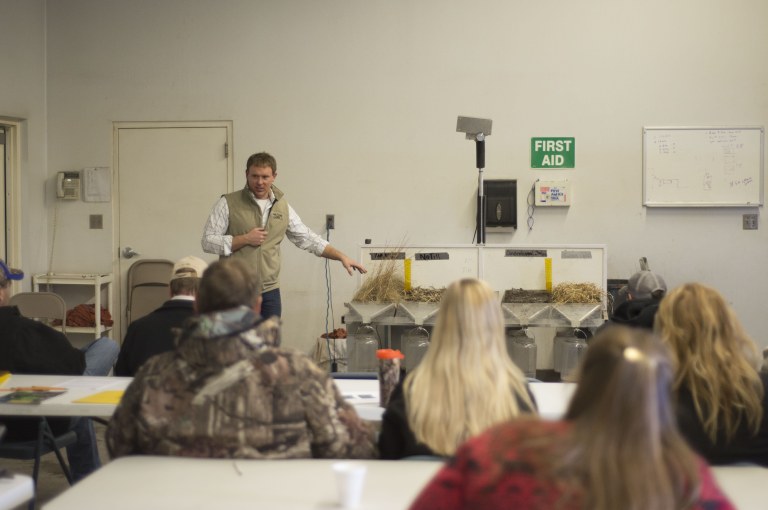
Paul DuBourt, NRCS, discussing soil health at a past Central Dakota Ag Day.
Central Dakota Ag Day is sponsored by the Agricultural Improvement Associations and Extension Service offices in Foster, Eddy, Wells, Griggs, Sheridan and Stutsman counties, as well as the NDSU Carrington Research Extension Center.
No registration is required. Lunch will be provided. For more information, contact Lemer at 701-652-2581 or joel.lemer@ndsu.edu.
Linda Schuster
Administrative Secretary
Joel Lemer
Foster Co. Extension Agent
Distillers grains impacted yields of corn and spring wheat, when used as a source of P
Introduction:
Condensed distillers solubles (CDS, sometimes referred to as “syrup”) and wet distillers grains (WDG) are co-products of ethanol production from corn. CDS, in particular, is usually produced in excess of demand as feed for the livestock industry in North Dakota. In 2016, a study was conducted for the second consecutive year with corn, to test the effect on yields, when P was applied at 0 (check), 40, 80, 120 lbs P2O5/ac with CDS, TSP, and WDG as sources of P. A wheat study also assessed the same treatments on spring wheat, but without the 120 lbs rate. Urea N was applied to TSP and check plots only, at recommended N rates. No other fertilizer was applied.
Results
- In 2016, corn yield increased by about 4 bushels on average as rates of P increased by 40 lbs.
- Wheat yield increased significantly, by 2 bushels from 0 to 40 lbs P, and by 5 bushels at 80 lbs P.
- Corn yield from WDG treatment was significantly higher than CDS, TSP, and check treatments; meanwhile in 2015, yield from CDS was significantly higher than WDG and TSP treatments (Figure 1).
- Wheat yield also increased significantly with WDG treatment compared to TSP. Yield from CDS treatment was not different from either WDG and TSP (Figure 2). Grain protein was significantly higher with WDG (16.3%) than with CDS syrup (16.1%) or TSP (16.1%).
Main observations
- WDG, increased corn and wheat grain yield compared to TSP and check in 2016. CDS, increased corn yields compared to TSP and check in 2015. It is likely that because N from urea was applied with TSP and check only, the effect of other nutrients, like sulfur, found in distillers grains may have enhanced the CDS and WDG plots.
- It is also probable that yield gains from CDS and WDG could be due to enhanced microbial activity. It is not evident why yields from WDG treatment were better than from CDS in 2016, but not in 2015.
- These results indicate that there are nutrient benefits to crops from using distillers grains as sources of crop nutrients.
- Preliminary assessment of net returns to farmers suggests that only producers farming within close proximity to ethanol plants are more likely to benefit from using distillers grains as fertilizer sources because of transportation costs. As of early 2016 condensed distillers solubles cost much less ($5 per ton) than wet distillers grains ($30 per ton), and cost about $25 to pay an applicator to haul and apply within 25 miles from an ethanol plant.
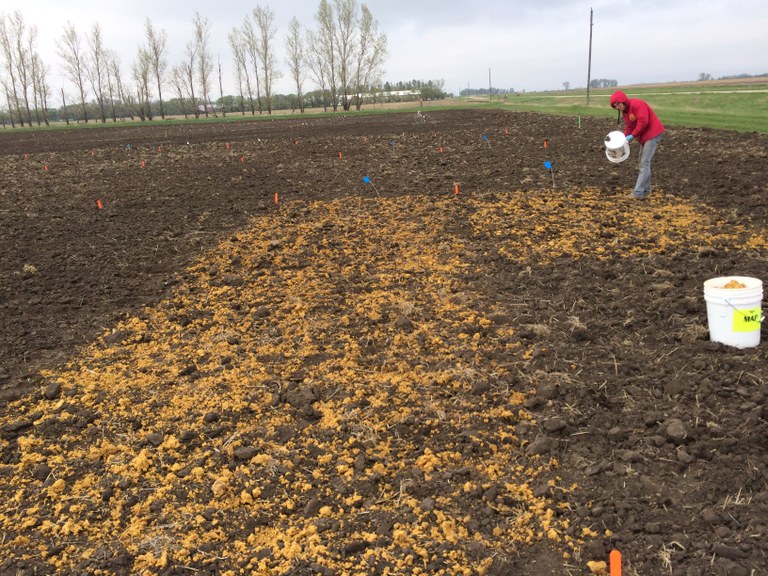
Jasper Teboh, Ph. D.
Soil Scientist
Manure as a source of N for wheat and the effect of supplemental N on wheat protein content
Low soil nitrogen (N) availability is the main limiting factor for yield and kernel quality in hard red spring wheat (HRSW) production and consequently nitrogen fertilization is one of the largest single expenses to grow HRSW. The N fertilizer cost is causing some producers to look for alternative and more affordable sources of N for wheat production. Manure is an alternative fertilizer, which can supply all the required nutrients at recommended levels for HRSW production. However, research done in North Dakota has shown that spring applied solid manure results in slow mineralization and consequently delayed N release, which can lead to lower yields and/or lower protein content in the kernel.
In the spring of 2016, we started a field trial at the CREC to test the response of HRSW to fresh beef feedlot manure and commercial fertilizer. The following treatments were applied to the main plots (60ft wide by 45ft long):
- 1.0 X N- Recommendation as manure (1xN-MAN)
- 1.5 X N-Recommendation as manure (1.5xN-MAN)
- 1.0 X N-Recommendation as commercial fertilizer (1xN-FERT)
- CHECK (see picture below).
The main plots were then split into two subplots (30ft wide by 45ft long). One of the subplots received supplemental N at planting and the other one at boot stage. The subplots were then split into three sub-subplots (30ft wide by 15ft long), where we applied rates of N (0, 20, and 40 lbs/ac) at either planting or boot stage.
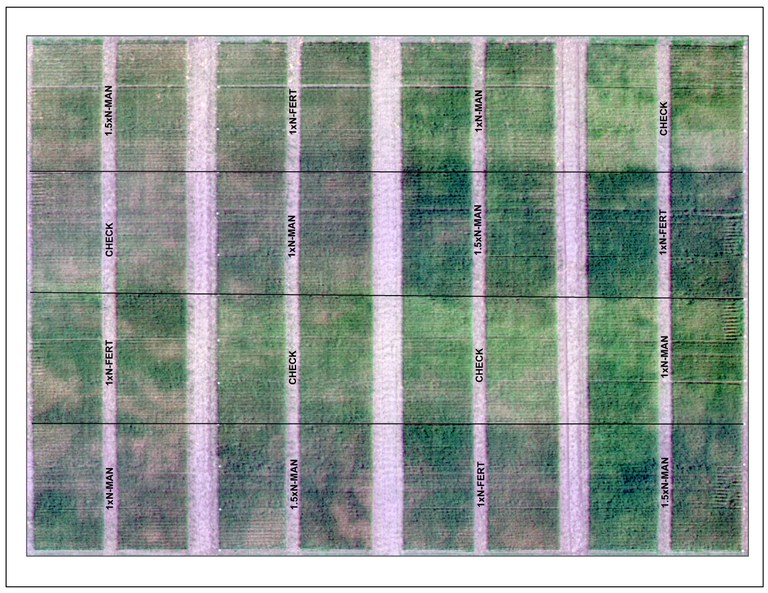
Wheat (cultivar Faller) was planted on May 3, 2016, at the rate of 1.4 million PLS/ac. On the same day, we applied the supplemental N due at that time. The remaining supplemental N was applied on 06/23/2016. The plots were harvested on August 17, 2016.
In summary, wheat fertilized with fresh beef feedlot manure showed similar yields (2-3 bu/ac more; Figure1) than wheat fertilized with urea. Although there was no interaction between the fertility treatments and supplemental N-rates, the results suggest that when using manure as fertilizer a supplemental 20 lbs of N/ac would be advisable to increase/maintain protein content above 14% (Figure 2), avoiding that way protein discounts. More years of data are necessary to verify the findings of this study.
Figure 1. Wheat yield response to manure and urea used as sources of N plus supplemental N-rates. Bars with the same letter are not significantly different (Tukey Test, α=0.05).
Figure 2. Wheat protein content in response to manure and urea used as sources of N plus supplemental N-rates.
Regarding recommendations about using either manure or commercial fertilizer for wheat production, there are many factors (fertilizer cost, manure application cost, manure nutrient value to subsequent crops, wheat price, protein discounts and premiums) that play a role on that decision. Therefore, I suggest that such recommendations should be done on a year by year basis, taking into consideration the most current information for those factors.
Paulo Flores, Ph. D.
Nutrient Management Specialist
Crop Adviser and College Ag Student Field Training
The Carrington Research Extension Center (CREC) has a long history of devoting resources to provide agronomy training to crop advisers and college ag students as part of its educational mission. During the 2016 crop season, two major programs were conducted at the CREC to provide ‘hands-on’ training using field demonstration exhibits and research trials.
Crop Management Field School
The field school was conducted on June 16 with over 50 participants, primarily agri-business crop advisers and extension agents. There were six educational sessions: weed identification, herbicide site-of-action, herbicide-tolerant soybean traits, late-season wheat management, insect management update, and management of salt-affected soils. Instructors were NDSU and Minnesota Extension Service crop specialists. Three quizzes were given and discussion was interactive. Participants received information that could be immediately used during the balance of crop season and future seasons. Seventy-six to 97% of participants completing a written evaluation indicated good to excellent usefulness of sessions.
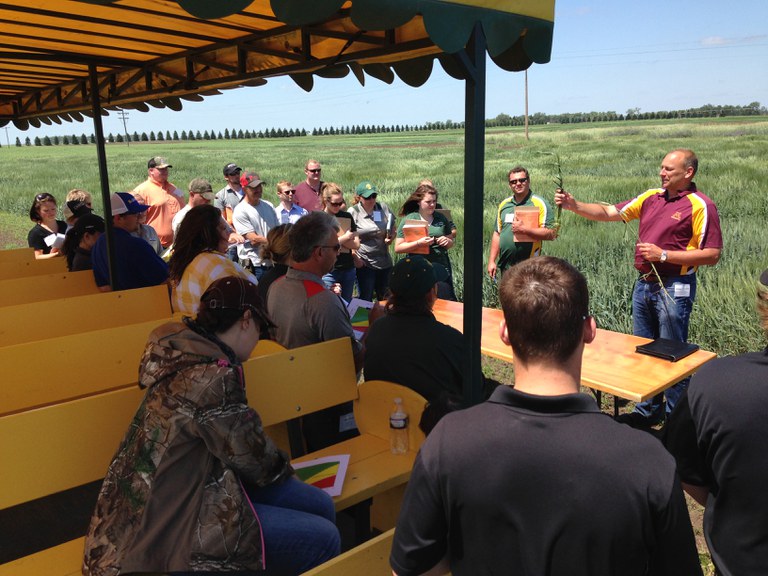
Crop Field Labs for College Agriculture Students
Field labs were conducted for a total of 65 agricultural students on June 20 for Lake Region State College and July 21 for Bismarck State College and ND State College of Science. Subjects included alternative crops and crop diversification, weed identification, herbicide site-of-action, herbicide-tolerant soybean traits, crop staging and management (alfalfa, corn, soybean, sunflower and wheat), crop tolerance of salt-affected soils, and cropping system study. Instructors were CREC agronomists and college professors. The field training was used to enhance the students’ classroom learning experiences.
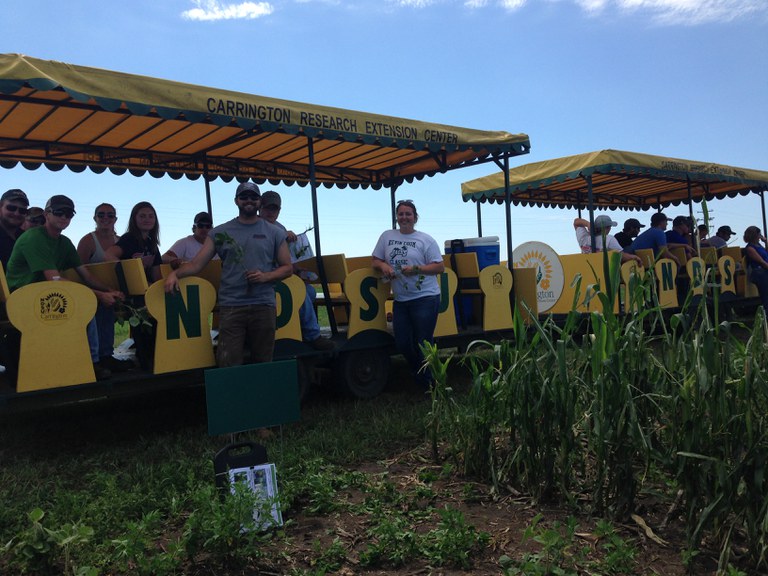
Greg Endres
Area Extension Specialist/Cropping Systems
Blaine Schatz
CREC Director and Agronomist
Winter Rye Research at the CREC – Variety Development
Winter rye is the hardiest winter cereal crop and can be planted later in the fall than other winter cereals. Winter rye germinates and grows at very low temperatures, it is the earliest winter cereal to grow in the spring and to reach seed maturity. Winter rye tends to require less inputs to raise, competes excellent with weeds and performs well under low fertility or moisture conditions along with providing reliable cover for erosion control. These traits are the reasons for the increasing popularity of rye being used in the rotation as a grain, forage, or cover crop.
Currently, very little variety development is occurring as the crop is considered a minor crop. The majority of the varieties commercially available have been developed and released for a number of years, and in some instances have lost varietal identity or purity by not being grown in certified seed systems. The lack of certified seed production has made it difficult to source seed of a known variety.
The CREC agronomy program coordinates the NDSU state winter rye variety testing program along with a diverse research program using rye as a grain, forage and cover crop. The agronomy program has also been working on variety development, focusing on winter hardiness, early season vigor, grain yield and quality, biomass production, straw strength, and early maturity. The foundation seedstocks program at the CREC has the capability to increase breeder and foundation seed. This collaborative effort illustrates the ability of diverse programs within a department to develop, trial, increase, and distribute seed of released varieties to the public.
ND Dylan winter rye, developed by the CREC agronomy program was released this summer by the North Dakota Agricultural Experiment Station with seed distributed by the ND County Seed Increase Program this fall.
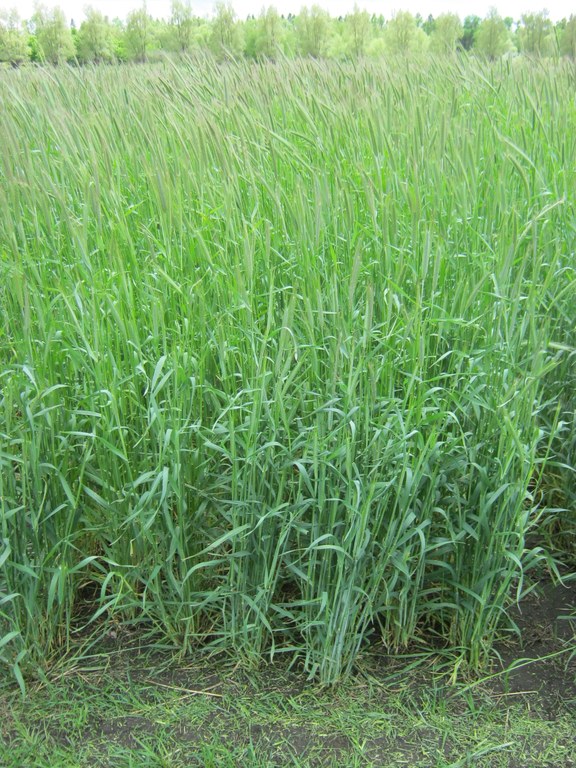
ND Dylan in 2016 organic variety trial.
ND Dylan is a high yielding winter rye variety that has good winter hardiness. Data gathered over multiple years indicate a yield advantage over current commercial varieties. It is a tall variety with good straw strength. ND Dylan is a medium-late variety, one day later than Rymin and five days earlier than Dacold. Test weight is equal to Rymin and better than Dacold. Seed weight is average, slightly higher than Dacold. Tested across 26 locations from 2006-2016, ND Dylan had a higher yield than Dacold, Hancock, Spooner, and Rymin.
Biomass data is limited, although data gathered indicates total dry matter yields of ND Dylan to be greater than Dacold and Rymin. Winter hardiness ratings and early season vigor scores demonstrate ND Dylan’s potential for use as a grain, forage or cover crop.
The renewed interest in winter rye for multiple use illustrates the need for a reliable source of adapted seed. Certified seed has not been grown in North Dakota for a number of years. The release of ND Dylan ensures seed of a known pedigree and seed source.
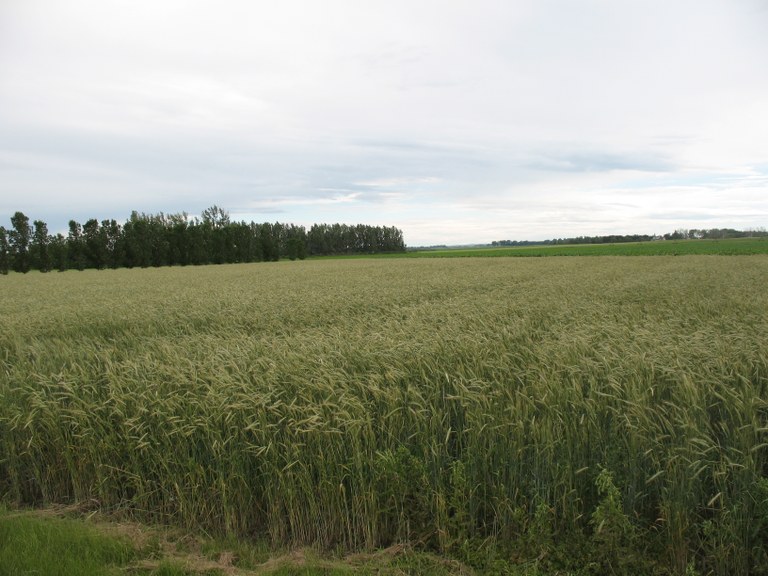 Breeders seed field of ND Dylan in 2014.
Breeders seed field of ND Dylan in 2014.
General Characteristics of ND Dylan:
- High Yield
- Good winter hardiness
- Medium-late maturity
- Good straw strength
- Tall
The CREC will continue to evaluate and develop winter rye varieties. Current work includes the development of a very early maturing line. Along with early maturity, we are also selecting for winter hardiness, early vigor and early biomass development for use as a cover crop or double cropping.
Steve Zwinger
Agronomy Research Specialist
Backgrounding Cattle - Average Daily Gain Goals
During last week’s backgrounding seminars held across North Dakota, the budgets that were provided supported higher average daily gains for more profitability. As average daily gain is increased the total cost per pound of gain decreased.
To watch a video taped session of the backgrounding seminars, please go to the following links:
- YouTube:
- Video 1: https://youtu.be/fPSw7zDfdqo
- Video 2: https://youtu.be/TdamrpUCW9c
- Facebook: https://www.facebook.com/NorthCentralREC/
However, there is always concern about calves getting too fleshy at higher rates of gain. Cattle buyers tend to discount fleshy calves that exhibit too much body fat or condition. Fleshy calves tend to have poorer subsequent feed yard performance.
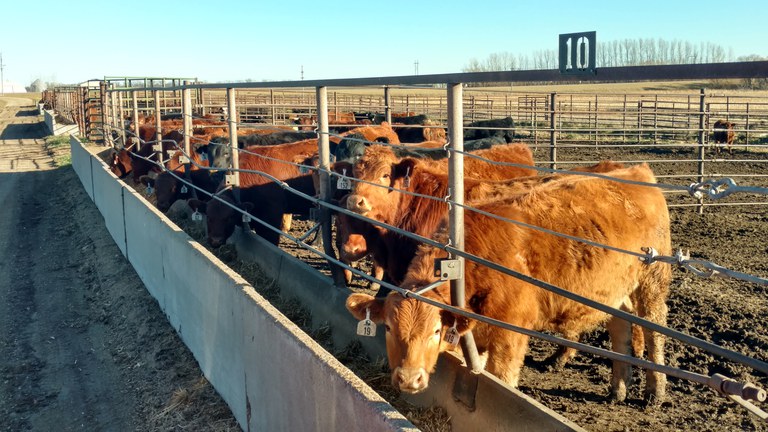
A previous CREC Animal Scientist, Anna Taylor, conducted research at South Dakota State University looking at backgrounding rate of gain on carcass characteristics. Steer calves weighing an average of 697 pounds were backgrounded until they weighed an average of 878 pounds. The 3 rates of gain were 1) 3 pounds per day for 63 days, 2) 2.5 pounds per day for 79 days, and 3) 2 pounds per day for 93 days. Calves were fed a corn silage based diet and the targeted average daily gain (ADG) was achieved by limiting feed intake. At the end of each backgrounding treatment, calves were fed the same finishing ration and harvested at a common backfat thickness of 0.55 inches.
To reach a common back fat thickness, calves with a lower backgrounding rate of gain were fed for more days - 187, 201, and 221 days for 3, 2.5 and 2 pounds ADG respectively.
Calves performed better with increased ADG during the finishing period when the backgrounding ADG was lower. Hot carcass weights were also heavier when backgrounding ADG was lower.
In other words, when backgrounding calves at lower rates of gain, calves are set up to gain faster and go to heavier slaughter weights when feed to a consistent 0.55 inch backfat.
However, the researchers commented that marbling appears to be best when calves are not grown to slow or too fast and this data set identified 2.5 pounds ADG had better marbling scores.
Karl Hoppe, Ph. D.
Area Extension Specialist, Livestock Systems
Unmanned Aerial Systems Research at the Carrington REC – An Update
North Dakota State University does not endorse commercial products or companies even though reference may be made to tradenames, trademarks or service names.
Researchers at the Carrington REC started to explore the use of Unmanned Aerial Systems (UAS) for agricultural purposes in 2014. During that season, seven flights took place over the CREC research plots collecting preliminary data. Those flights covered a limited number of trials and usually trials were flown only once. The research team quickly realized that more flights and repeated flights over the same area during the growing season would be needed to determine how this technology could be most usefull for crop production.
In 2015, three flights were flown at the CREC, but due to technical issues with the sensor (camera) the data collected was determined to be of limited value.
At the end of 2015 a research team from the CREC, along with other NDSU collaborators, sucessfully secured funding from a precision agriculture program administrated by the NDSU Agricultural Experiment Station. Since then, we have purchased a UAS (AgBot) and a multispectral camera (MicaSense RedEdge), which allows us to fly more often and to define flight schedules best suited for particular research objectives.
In 2016, we flew more than 80 flights over 16 days covering the majority of the CREC’s land base. These flights captured around 14,000 images from more than 150 trials at the CREC and at the Oakes Irrigation Site. Much of the data collected still needs to be analyzed and cross referenced with the ground data collected during the growing season. Listed are examples of the results that we have been able to process up to this date.
- Corn Stand Counts: Corn was planted on May 1 and flown on May 23, 2016. So far, the best results have been seen when flying at 50 ft above ground level (AGL) using NDVI (black and white color scheme). In a area of around 1 acre in size, we counted 31,189 plants. Futher work is needed to break that area into small plots where we can then count the plants and compare to other counts in our process of ground proofing the data.
- GreenSeeker NDVI data versus UAS NDVI data: Correlations between GreenSeeker NDVI and UAS-NDVI have shown very good correlations (R2>0.85) for most of the trials that we have processed.
- UAS NDVI versus soybean yield and plant maturity: UAS-NDVI collected on August 5 correlated well with plant maturity (R2=0.86) and yield (R2=0.90). Flights from August 12 and 22 showed similar results.
- UAS NDVI versus barley disease assessment and yield: the best correlation (R2=0.71) between UAS-NDVI and yield was found when we flew the trial on July 21. Very encouraging results were found when we correlated levels of incidence of leaf spot diseases on flag leaf-1 with UAS-NDVI on July 15 (R2=0.77) and July 21 (R2=0.76).
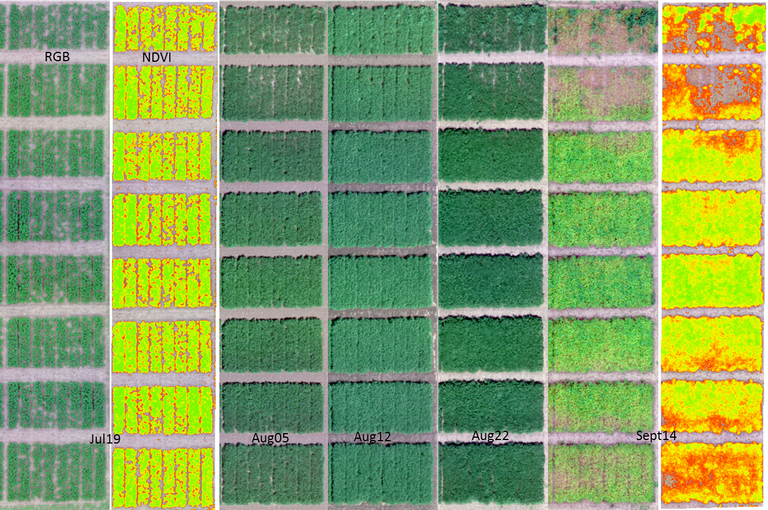
RGB and NDVI mosaics of a soybean trial flown on five days during the 2016 growing season at the Carrington REC.
We are looking forward to the winter months when we will process the remaining data collected and see what further information we can learn on how to use this new technology. The CREC personnel look forward to sharing some of that information with our constituency during the meeting season.
Paulo Flores, Ph. D.
Nutrient Management Specialist
To Roll or Not to Roll?
Typically when corn is included in cattle rations, particularly in backgrounding and finishing diets, it is processed by dry rolling, grinding, or steam flaking. In North Dakota, the processing method is typically dry rolling or grinding. However, not everyone has the ability to process corn on the farm and it is an added cost. Every year producers ask, “do I need to roll my corn or can I feed it whole?”. Unfortunately it is not a simple answer. As we glean through the huge body of research that has evaluated corn processing method and levels of processing, the results are mixed. In many cases, there is no difference between animal performance or feed efficiency when corn is rolled or fed whole. In other instances animal performance may be similar but dry matter intake is increased when whole corn is fed, and thus feed efficiency is improved with processing over whole corn. Additionally, age of animal may also be a factor.
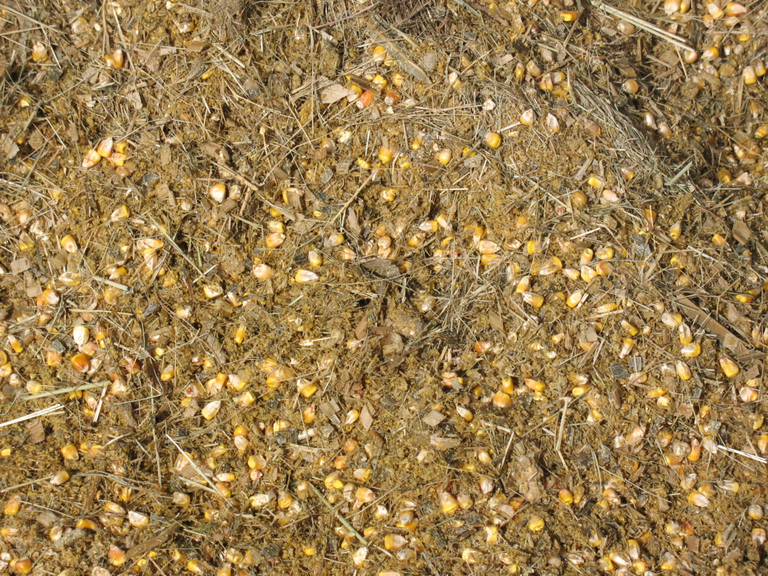
Whole Corn Diet
Over the past few years, research trials at the North Dakota State University Carrington Research Extension Center (CREC) has focused on trying to sort through this mystery and clarify if rolling is beneficial or when feeding corn whole is comparable to rolled corn diets. The research trials at the CREC have included: two yearling steer feedlot finishing trials with higher than typical forage levels and one trial using weaned calves to evaluate processing level in backgrounding and finishing rations have been conducted.
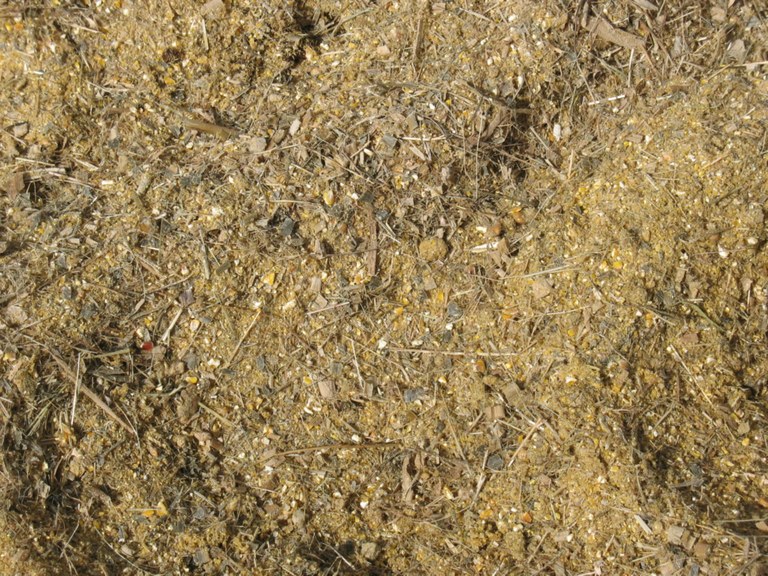
Rolled Corn Diet
The data for the first two yearling feedlot trials have been published in the 2014 and 2015 North Dakota Beef report and can be accessed here: https://www.ag.ndsu.edu/pubs/ansci/beef/AS1736-07.pdf and https://www.ag.ndsu.edu/pubs/ansci/beef/as1775-05.pdf.
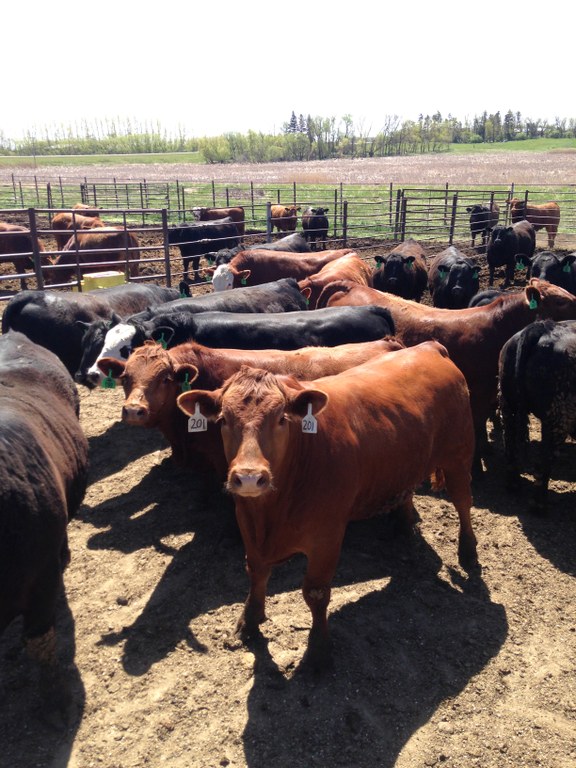
Cattle on Feed
The most recent trial was a 61 day growing and 140 day finishing study with whole or rolled corn, using 189 weaned cross bred steer calves. The forage level in the growing diet was 31% and 14% in the finishing diet, from corn silage and straw. Corn levels in the diets were similar between whole and rolled corn. The average starting weight was 665 lbs. The cattle weighed 863 lbs at the end of the growing period and finished at 1399 lbs. In the growing period, the cattle gained 3.22 lbs/head/day on both the rolled and whole corn diets. Dry matter intake was also similar for whole and rolled corn diets at 18.9 lbs/head/day. In the finishing period, gains were similar for whole and rolled corn diets at 3.9 lbs/head/day. Dry matter intakes were also similar at 24.0 lbs/head/day. Thus, for both the growing and finishing periods the feed to gain ratio was similar for whole and rolled corn fed cattle.
- In these trials, consistently across all, the animal performance was similar if whole or rolled corn was fed.
- In one yearling trial, dry matter intake was increased with whole corn but similar dry matter intakes were measure for whole or rolled corn in the other two.
- In the yearling trials, the gain to feed ratio tended to be higher for rolled corn.
- In the weaned calf growing and finishing trial, the gain to feed ratio was similar with whole or rolled corn.
For more information call 701-652-2951 or email Chanda.Engel@ndsu.edu.
Chanda Engel
Livestock Research Specialist


